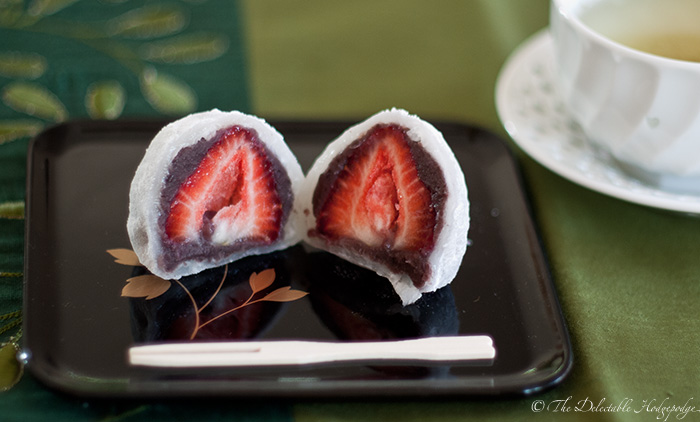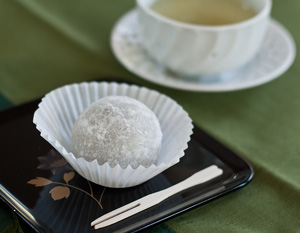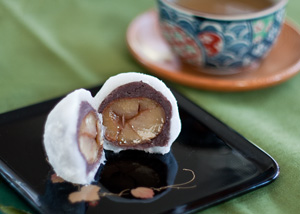
Ichigo Daifuku
| Ingredient | 6 Daifuku | 6 Daifuku |
|---|---|---|
| Outer Wrap | ||
| gyūhi | 1 batch | 1 batch |
| potato or corn starch | to dust | to dust |
| Filling | ||
| strawberries | 6 medium | 6 medium |
| koshian | 4 oz. | 120g |
Strawberries (ichigo) are relatively modern addition to this traditional Japanese confection, but once you‘ve tasted one it’s easy to see why the pairing is popular. Smooth, mellow anko, it turns out, makes an unexpectedly apt pair with a tangy strawberry, and the fruit’s texture is a perfect pair with the velvety gyūhi wrap.
Preparation

- Prepare a batch of azuki bean paste for the filling; freeze any you don’t end up using.
- Prepare the ingredients for a batch of gyūhi, but don’t start mixing them yet.
- Wash, dry, and hull strawberries.
Directions
- Make balls of anko.
Divide the anko into six balls, each about 20g (¾ oz.). - Wrap strawberries in anko.
Flatten the balls of anko into disks, then wrap a disk around each strawberry. - Make gyūhi.
Follow the recipe and prepare a batch of gyūhi. - Make gyūhi disks to wrap the anko.
Liberally dust a cutting board or plate with potato (or corn) starch, and drop the gyūhi dough onto it. Cut the dough into six equal chunks. Coat your hands with starch so it doesn’t stick, then flatten the dough with your fingers into small disks. The center of the disks should be thicker than the edges, since it will stretch. - Wrap anko balls.
Lay each gyūhi disk in your palm, put an anko ball in the middle, and stretch the gyūhi around it, pinching the bottom to seal.
Notes

- For a variation, you can use candied chestnuts (kuri no kanroni) instead of strawberries, to make kuri daifuku (“chestnut daifuku”). Japanese-styled sweet-stewed chestnuts are something of a specialty food; they’re similar enough to European marron glacé that those could be used as a substitute.
- The finished daifuku are supposed to end up with a layer of starch on the outside; this keeps them from sticking to fingers and plates.
- The smoother texture of koshian goes well with the smooth outer layer of daifuku, but if you prefer you could also use tsubuan.

